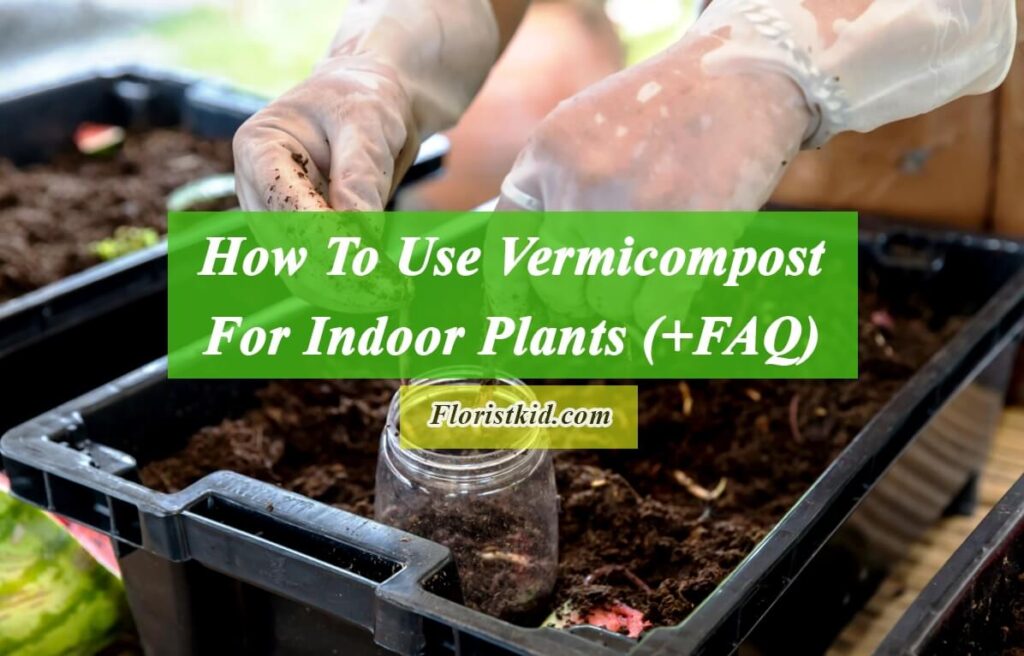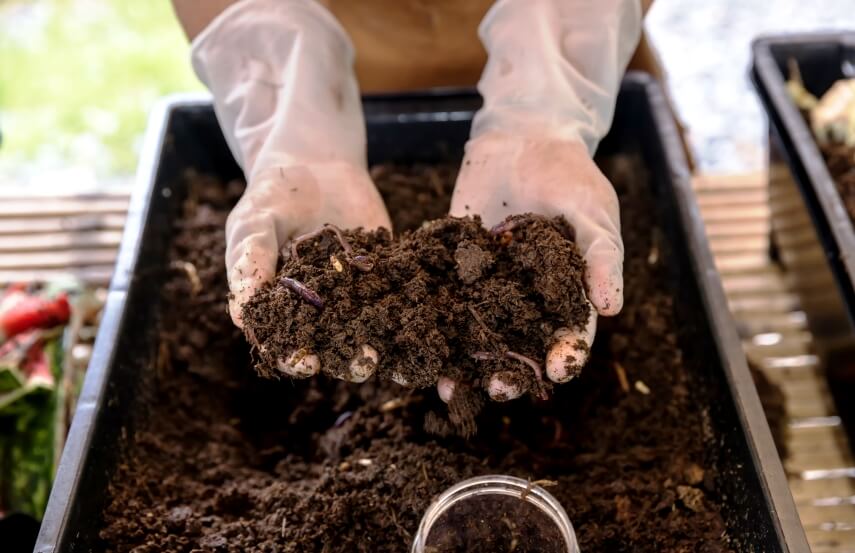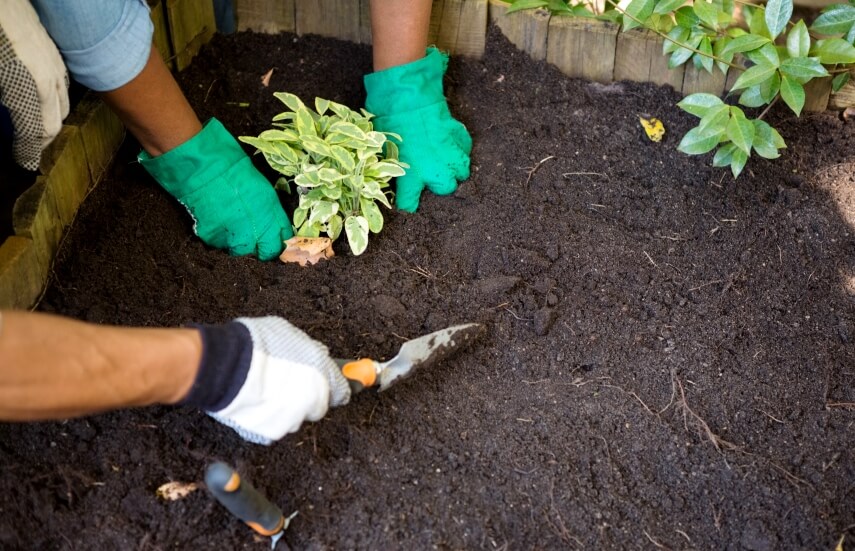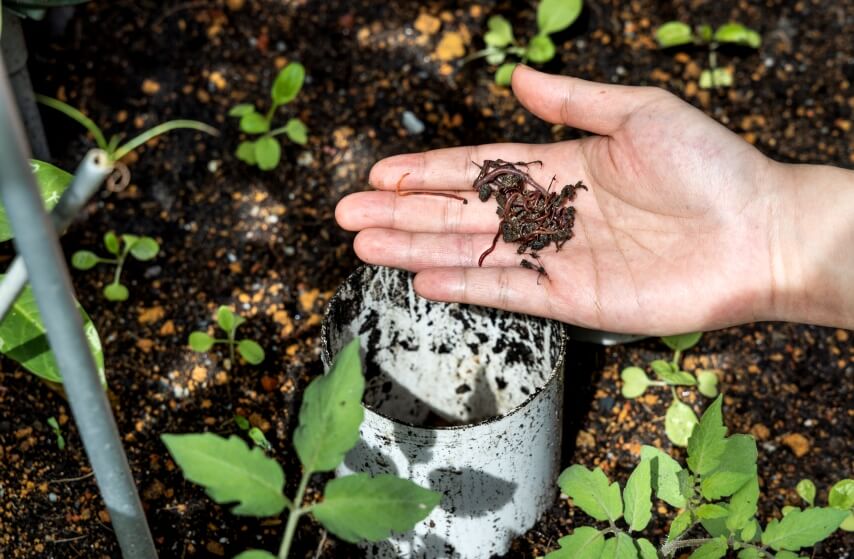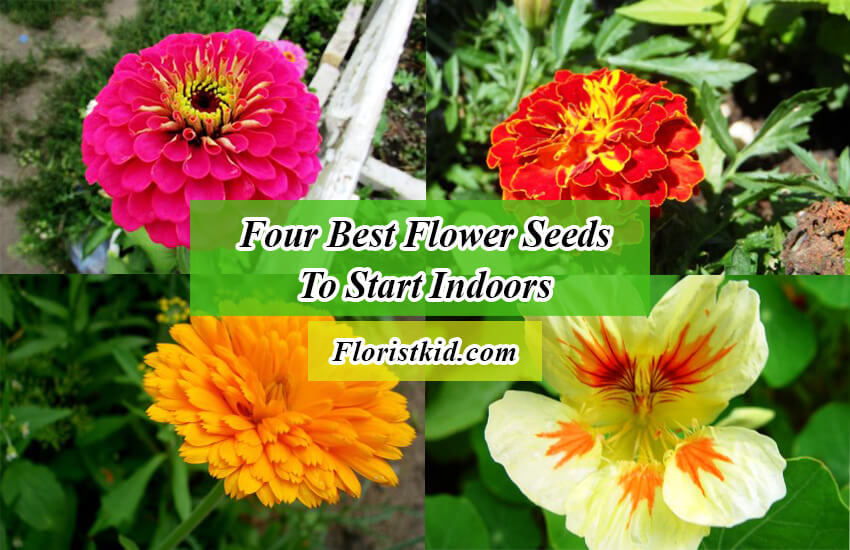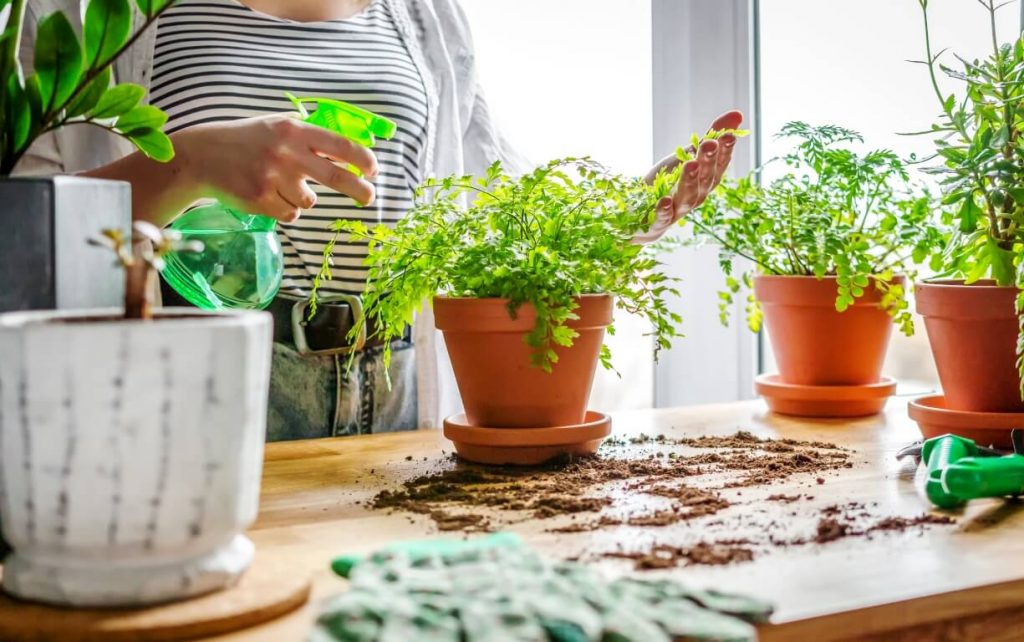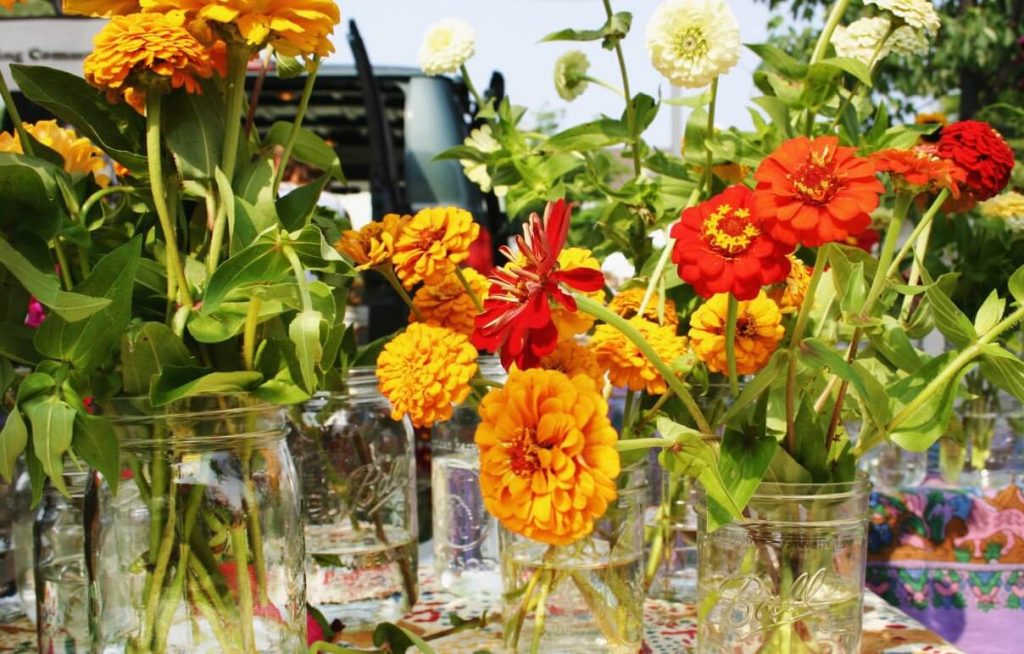One of the most common organic fertilizers used by home gardeners is vermicompost. This organic supplement is full of nutrients that can improve plants’ growth and keep them healthy. Despite being so common, many gardeners still need to learn how to use vermicompost for indoor plants.
This article addresses different ways of using vermicompost for indoor plants and answers the top frequently asked questions about it.
If you are interested in this topic , you can also read
<<Best Potting Soil For Indoor Plants >> and <<Child-Friendly Soil For Kids>>articles.
About Vermicompost
Vermicompost is the end result of a decomposition process that uses a variety of worm species, typically red wigglers, white worms, and other earthworms, to produce a mixture of bedding materials, decomposing food or vegetable waste, and vermicast. Vermicomposting, often known as worm composting, creates a rich organic soil amendment full of beneficial microbes and a variety of plant nutrients [1].
Vermicomposting has several advantages, but the two most well-known ones are (1) turning waste into useful organic fertilizer and (2) keeping organic leftovers out of landfill and paying less for trash pickup.
For school kids, vermicomposting can be a good hobby and can be used in gardens to boost plant growth. Vermicompost can be put straight into your soil or combined with potting media to give plants important organic matter, nutrients, and a variety of helpful bacteria [2].
How to use vermicompost in potted plants
Vermicompost can be applied to potted plants in three different ways:
1) It can be used as a top treatment for potted plants.
2) It can be mixed with the potting soil.
3) It can be used for creating a seed-starting mixture.
We will go into more depth about these approaches in the following paragraphs.
Topdressing the soil
Topdressing is the process of adding vermicompost to topsoil of potted plants. All the macro- and micronutrients that plants require are present in vermicompost. You can take advantage of vermicompost benefits by incorporating vermicompost into topsoil every 15 days.
Mixing with potting soil
Adding vermicompost to the soil mixture can improve the quality and texture of potting soil. Potting soil and vermicompost can be combined in a 3:1 ratio. If the potting soil has an excessive amount of clay, you can also add 1 part of river sand to the potting soil to improve water drainage.
If you do not have pre-made potting soil, you can make one with your garden soil. To make a good potting mix, combine vermicompost, coco-peat, and garden soil in a ratio of one part each (1:1:1). This mixture is frequently referred to as an all-purpose potting mixture [3].
Creating a seed-starting mix
Vermicompost and cocopeat can be combined to make a seed-starting mixture. Cocopeat gives the seeds a suitable texture for germination. It also drains off the extra moisture while retaining enough.
The vermicompost can give the seedlings nourishment and healthy organisms. Although the seeds have their own nutrients as they develop into seedlings, vermicompost will boost them.
Frequently asked questions about vermicompost (FAQ)
Does vermicompost contain earthworms?
Earthworms are involved in vermicompost production but are not present in the finished product. However, sometimes the final product might have some earthworm eggs.
What are the properties of good vermicompost?
High-quality vermicompost is uniform, wet, medium-dark in color, and has a welcoming earthy odor. It is an excellent organic fertilizer and soil conditioner since it is nutrient-rich and contains water-soluble nutrients.
NPK, Sulphur, Calcium, Magnesium, and Iron are all components of a well-balanced vermicompost. Micronutrients like manganese, zinc, copper, boron, and molybdenum are also present in vermicomposts.
How often can you use vermicompost in potted plants?
Every 15 days, you can topdress the soil with vermicompost to add nutrients for your growing plants. This may change depending on the plant you are cultivating and where it is in its life cycle.
You should not use vermicompost for germinated seeds until the seedlings are prepared for transplant. Vermicompost can be incorporated into the potting soil once the plant has been transplanted and is flourishing.
You can also try adding vermicompost to the plant’s soil if it exhibits symptoms of nutritional deficiency, such as yellowing leaves and limited development.
Which one is better for houseplants: compost or vermicompost?
Beneficial organisms break down organic materials and transform them into nutrient-rich substances to create compost. However, vermicompost is made from the worm castings left behind by worms like earthworms after they digest and break down organic waste.
In comparison to compost, vermicompost offers more nutrients and healthy organisms. Research has shown that vermicompost is a more effective growth stimulator than compost. It improves the physical, chemical, and biological properties of the soil.
In general, vermicompost is superior to compost for potted plants as it has more nutrients, a better texture, and more healthy organisms.
Which one is better for houseplants: NPK fertilizer or vermicompost?
Vermicompost is preferable when you wish to improve the soil’s balance of nutrients for potted plants. It has a balanced ratio of macro- and micronutrients. Additionally, it enhances the texture of the soil and adds beneficial bacteria.
NPK Fertilizer is preferable when you wish to add specific nutrients to the soil. The fertilizer may be a good source of macronutrients like potassium, phosphorus, or nitrogen. Of course, you might use a balanced NPK fertilizer that contains the three macronutrients in equal amounts.
Is vermicompost suitable for all indoor plants?
All potted plants benefit from vermicompost since it is a balanced source of nutrients. The potting soil gains helpful organisms from it, and the soil’s texture is enhanced.
Vermicompost should be added once the plant has begun to grow so that it can receive the necessary amount of nutrients. The addition of organic fertilizer with additional potassium, such as wood ash, is also beneficial once the plant has begun to blossom or bear fruit. This provides a boost to the plant at this time.
Can you grow plants only in vermicompost?
No, you can not. Vermicompost lacks the necessary texture to hold plants; thus, you cannot use it as potting soil without risking plant falls. Pure compost might also cause some plants to grow more slowly or even die.
What is the best vermicompost for potted plants?
One of the best vermicomposts is Wiggle Worm Soil Builder. It is perfect for both indoor and outdoor plants. Any plant, including houseplants, flowers, and vegetables, can be grown with it.

